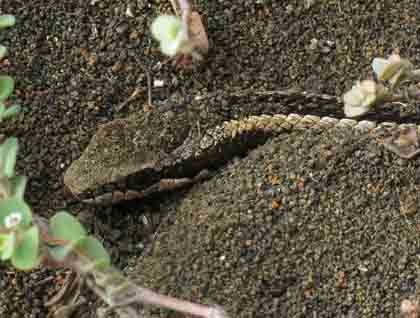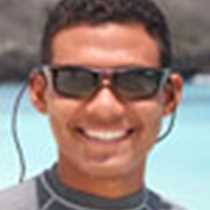Today we successfully completed another day of activities on these two different islands.
In the morning famous Bartolome Island welcomed us with its landscapes. It is a place where explosive volcanic eruptions transformed the magma into ash that later became tuff and cinder, both of them containing big amounts of gas. After the volcanoes stopped erupting, the wind and waves transformed the tuff cones into particular shapes like the most popular and photographed Pinnacle Rock. To enjoy more of the place, the hike to the summit of Bartolome started before breakfast. Sally light foot crabs waited right at the landing site, lava lizards were just waking up when we stated to use the stairs and a snake proved to be an unexpected surprise next to the trail. By the time we got to the end of the trail it was obvious why the hike was early, Santiago Island was lovely in the distance, the National Geographic Islander was anchored in the bay and the landscape and light were perfect.
After a well-deserved breakfast we geared up again and landed at Bartolome for the water activities. Some guests decided to stay and relax at the beach and others ventured into the ocean for snorkeling. Many different types of tropical fish, a sea turtle, sharks and penguins gave us the first impression of the marine ecosystem on these islands. During the afternoon, after an Ecuadorian buffet and very traditional nap, there were more options to take.
Rabida Island, like Bartolome before it, was created by a volcano which erupted cinder. This particular place on the Galapagos contained higher concentrations of iron, giving the red color to the entire island after the oxidation process it suffered. The options started with kayaking along the shoreline with some turtles and boobies, snorkeling in a deep area with more fish and sea lions, and enjoying the red sand beach. So after the water activities and a quick change, we landed one more time for a walk on the beach with sea lions, sea birds and mockingbirds. During this walk we saw how aggressive they can be when their relatives go into the wrong territory.
That was our second day around the Galapagos Islands, full of lava and life.







